All you need to know about your products!

| 3DNews Vendor Reference English Resource - All you need to know about your products! |
||||||
 |
||||||
|
|
||||||
GOTVIEW PCI DVD2 Lite and Deluxe: TV-tuners with hardware video compressionAuthor:Date: 17/05/2006 Some time ago, the GoTView PCI DVD TV-tuner with the hardware MPEG-encoder CX23416 won a lot of whatever rewards for high quality of reception, high recording quality, the best package bundle, for… In fact, for all. This unique TV-tuner has still been in great demand among all the home video fanciers who finally decide to digitize the content accumulated for many years. But for some reasons, the manufacturer decided not to equip this stylish low-profile board with an FM-radio receiver. We only have to guess about the causes, but there is the fact that the circle of potential users of GoTView PCI DVD have turned narrow significantly, since the radio audience in our country is wide enough. Today, we are presenting two novelties that continue the line, they are GoTView PCI DVD2 Lite and GoTView PCI DVD2 Deluxe which arrived at our test lab today. The names seem to suggest that the boards are to be very similar to one another and differ in fine details only, say, availability of accessories in the package bundle. But in fact these two video cards are similar to one another only in some parts. Package bundle specificsThe company has not revised its proprietary style of packaging (and the hardware itself either) where the violet color prevails. Boxes with the cards are compact enough and are similar in dimensions , but the package bundle of the Lite and Deluxe models has undergone essential changes.  GoTView PCI DVD2 LiteInside the box with PCI DVD2 Lite we found the following contents: a replaceable metal plate to fit the board inside various makes of housings like Barebone, a remote control, an S-Video->RCA adapter, an audio cable 3.5 mm minijack - an RCA pair, an external IR sensor for the remote control with sticky base, an FM aerial, CD with proprietary software, a traditional CD with WinDVD Creator 2 by InterVideo, as well as a hard copy of video editing manual (in Russian). 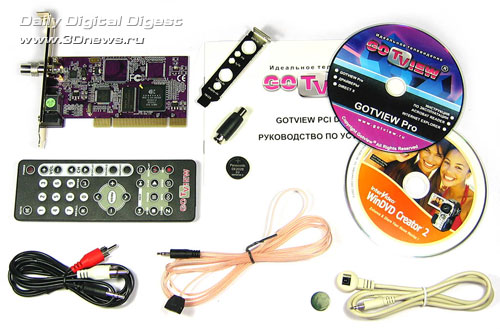 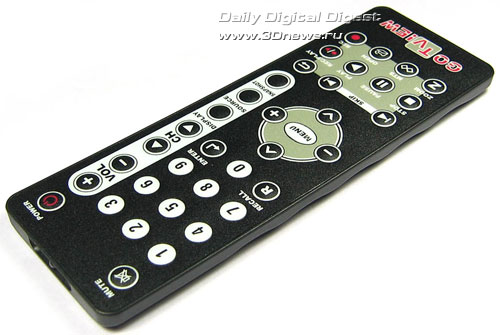  the board can be fitted inside compact housing, and there is an unusual more comfortable FM-aerial. The latter is not a T-shaped structure. Now it is a single cord which is easier to fasten around. 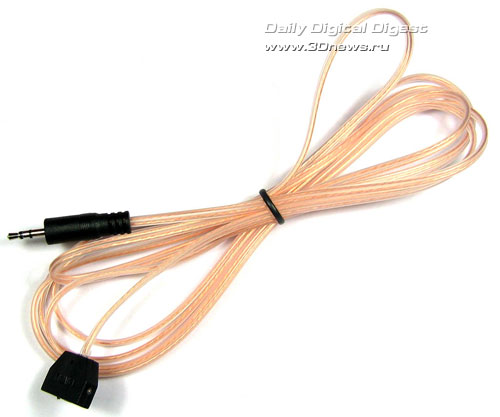 GoTView PCI DVD2 DeluxeThere is less free space in the second box: the tuner itself, a replaceable metal plate, a universal remote control, an external IR sensor for the remote control, an S-Video cable with RCA connectors, an audio cable 3.5 mm minijack - an RCA pair, a T-shaped classical FM aerial, two CDs, a Russian-language manual for video editing, and the remote control usage guide. 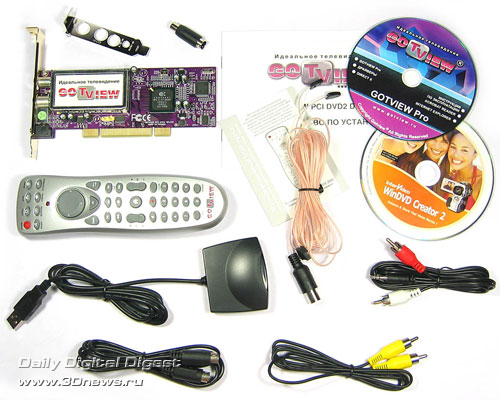 The "Deluxe" prefix added to the name of the tuner has its purpose. The most important difference in the package bundle, apart from the additional cords, is the unique remote control which we wrote about several times on our web site. You can find a detailed description in the respective review. Nevertheless, of note is that the remote control is primarily remarkable for the fact that its operation does not require any software - it leverages the operating system facilities of hot key assignments for absolutely any action, e.g., start-up of a program. Besides, this handy remote control operates with any programs that allow for hot key assignments, e.g., with the popular Winamp MP3-player. And of course the remote control is fully supported by the program to operate GoTView TV tuners. 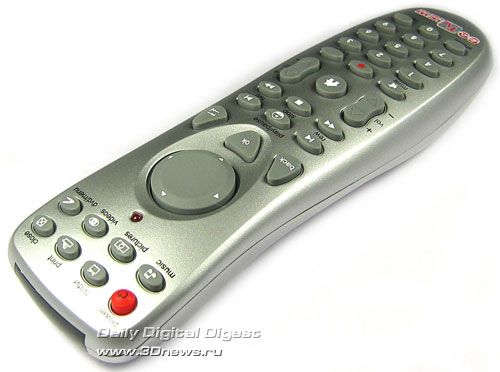 Summing it up briefly, we note that the package bundle of GoTView PCI DVD2 Deluxe is one of the most abundant among similar cards to date. Design of theExternally, the boards are different in not only the components but in their dimensions - the Lite version is much shorter than its elder brother. On the other hand, by the width both cards are suitable for installation within a Barebone system, in which case the metal fastening plate has to be replaced with a shorter one that comes as a bundled item. Let's examine each tuner in more detail. 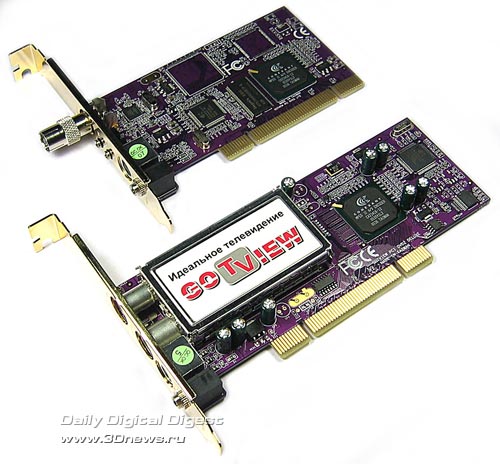 GoTView PCI DVD2 Lite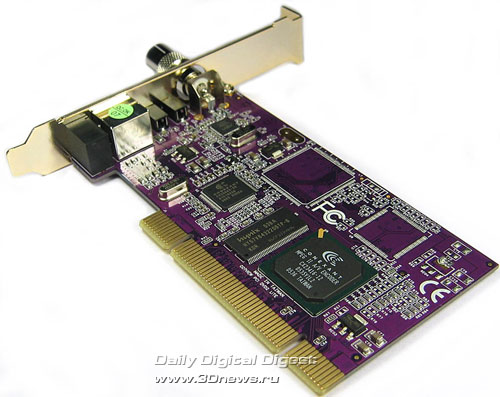 This model is interesting in that the user won't find the large-size traditional RF unit. The thing is, this tuner uses a semiconductor selector switch by Xceive - XC2028. But it is so tiny that you can't notice this square chip on the front side of the board. 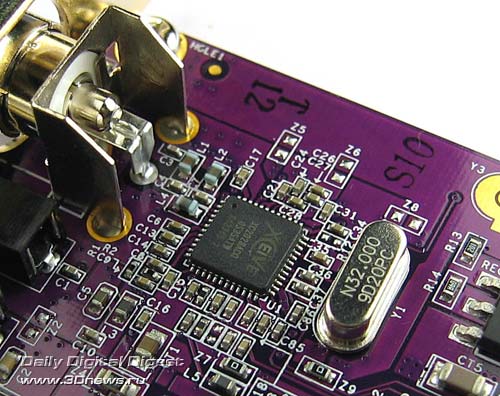 Quite recently, we examined operation of the RF-unit of the company together with a TV-tuner for the notebook AVerTV Hybrid+FM Cardbus. But instead of that, it used the XC3018 chip, and the reception quality has not proved on par. There are no longer any doubts in that semiconductor selectors have equaled screened analogous boxes at quality. Besides, the chip-selector is cheaper to produce, which is another hit at the tin boxes. As the core, the manufacturer has made use of the 10-bit modern decoder chip CX25843 by Conexant System Inc, which meets all the latest requirements: it allows for MPEG-1/2 recording at up to 15 Mbit/s stream rate, support for stereo sound in NICAM and A2 formats, support for various audio settings (balance, three-band equalizer) etc. 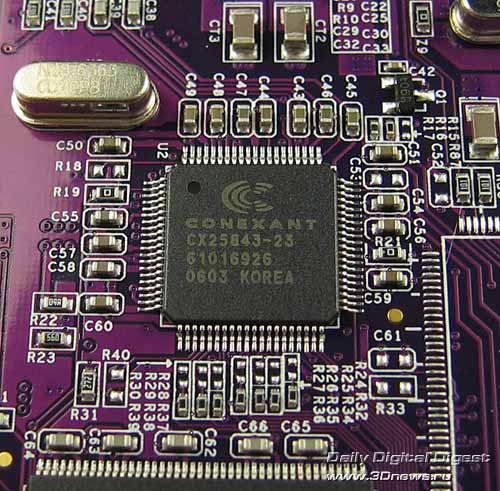 The no less popular encoder chip CX23416 by the same manufacturer is in charge of MPEG-1/2 encoding. This chip can be found much more frequently as an encoder on various cards, both internal and external, du to a high quality of the produced material, as well as adjustable noise-suppression settings. 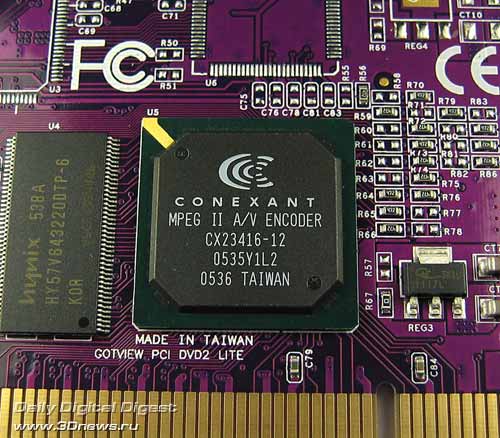 We have already mentioned the chips CX25843 and CX23416 repeatedly, so we'd better not dwell on their traits. On the whole, the board is wired on both sides, it stands out with its traditionally high quality of soldering and no less traditional stylish violet lacquered coating. 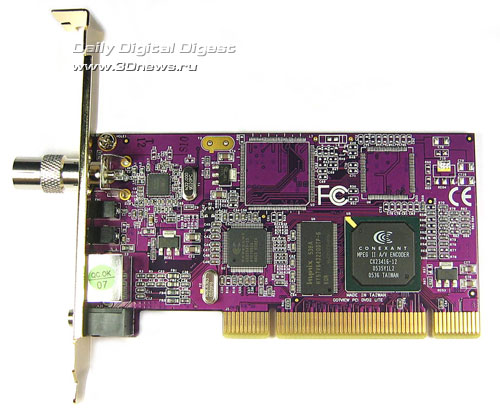 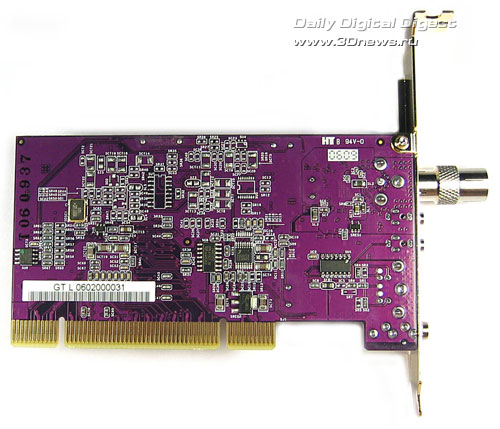 Another interesting detail is that the board has not a single electrolytic capacitor - only ceramics. Moreover, the board uses a power supply stabilization system to reduce noise from other devices, which is extremely important for the internal tuner. Another fine point regarding the heat emission. In the GoTView PCI DVD2 Lite tuner, it has been reduced to the minimum limit. First, the combination of Falcon 2 chips (CX25843 and CX23416) has already shown its best on other products, including the formerly tested TV-tuner GoTView USB 2.0 DVD Deluxe. Secondly, the RF-unit XC2028 differs from its brothers in a much lower heat emission. It turns out that the board heats up insignificantly during operation, so it is a perfect match for compact Barebone systems. GoTView PCI DVD2 Deluxe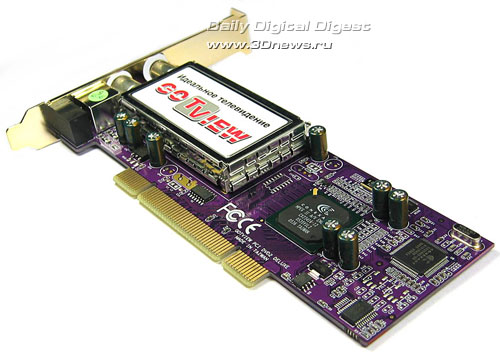 On the higher-end model, the manufacturer decided to install a proven and still trendy RF-unit. To that end, the most advanced model to date was selected - Philips FQ1216ME/I H-5, or Mk5, which also features in FM range reception, high image quality, and low noise level. 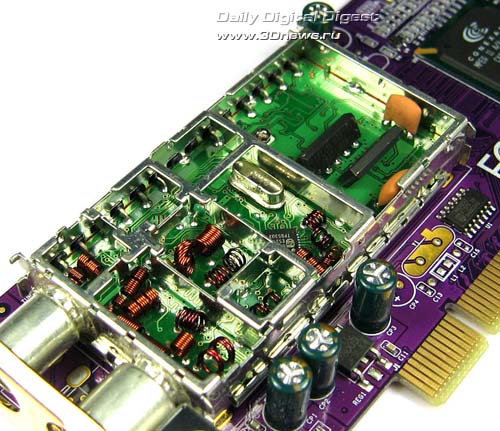 The Deluxe version is similar to the Lite for the availability of the same principal chips CX25843 and CX23416 - the Falcon 2 combination. 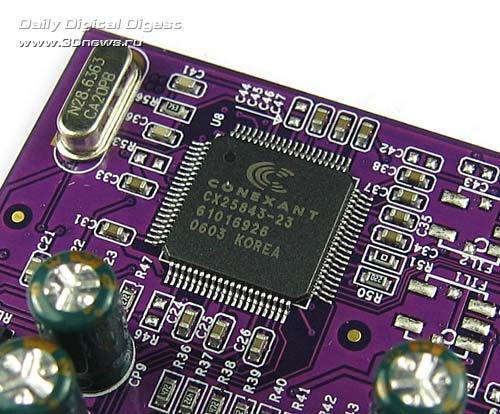 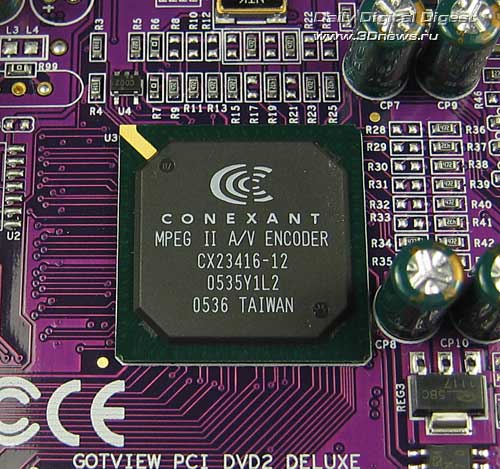 Besides, traditional electrolyte capacitors have been added to the double-sided wiring. 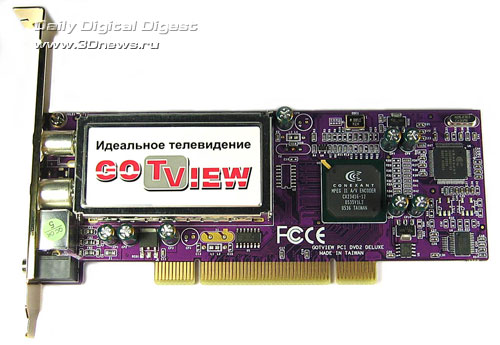 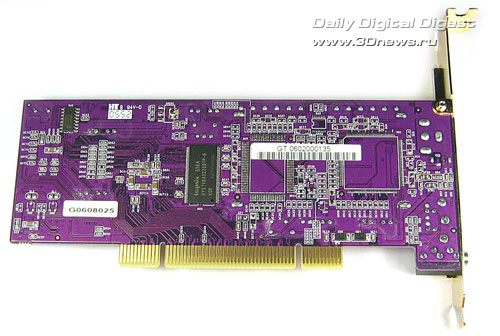 That is, GoTView PCI DVD2 Deluxe appears to be a classical version of a TV-tuner for those who are not into latest trendy ideas but prefer proven structures, albeit more costly, and reliable. Connection featuresThe boards have somehow different connector panels. The GoTView PCI DVD2 Lite has a jack to plug in a TV aerial (interestingly, connected via an adapter from a regular RCA "tulip" plug), an extraordinarily miniature jack to plug in an FM-aerial, a stereo input in the form of a 3.5 mm minijack connector, an S-Video input, and a jack to plug in an external IR receiver. 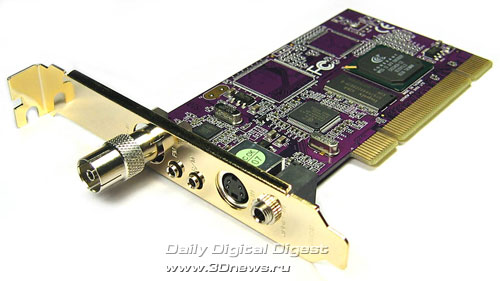 The GoTView PCI DVD2 Deluxe has jacks (traditional for its form factor) to plug in TV and FM aerials, an S-Video input, and a connector to plug in an external IR receiver. 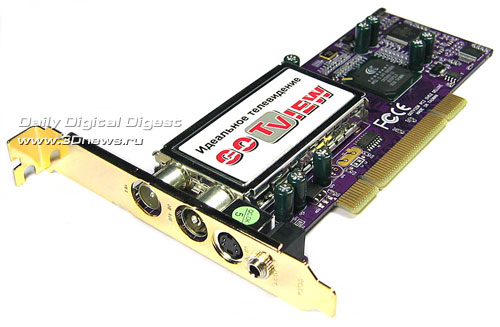 Using the tunersOnce the drivers were installed, we usually had no problems, and the system detected a new hardware: the tuner GoTView PCI DVD2 Lite and the tuner GoTView PCI DVD2 Deluxe. As was found out later, both TV-tuners came bundled with software of version 4.0.0.478. The latest software version tested in our test lab was detected also with GoTView USB 2.0 DVD Deluxe (which is by the way very similar to GoTView PCI DVD2 Deluxe at its wiring) and was indexed as 4.0.0.473. Since that time, many new features have been added to the program, and some of them merit a special consideration. These are hardware de-interlacing, writing audio and video streams into separate files, and new methods for sorting channels on a rating basis. The remaining features of version 4.0.0.473 were described in a respective review on the full version of the programs, so we are not dwelling at the operation specifics so as not to repeat. 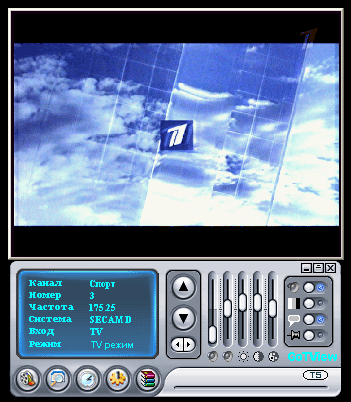 It suffices to say that the manufacture has done a great job and perhaps implemented in the software suite everything GoTView are capable of. For instance, there have been implemented customized settings for each channel - all settings for audio, image, encoding type, noise suppression; there is a possibility to scan any specified frequency range in a selected increment; there is also the full-featured PIP tool - "picture in picture", the visualized pattern of program schedule updateable via Internet and a scheduler have been meticulously polished to perfection; there have also been implemented such features like networked broadcast and a motion detector. That is, the proprietary software has virtually "inspired a soul" into the hardware "rig" by GoTView - the "soul" most TV-tuners on the Russian market to date lack, and even some analogs with world's renowned brand names. But let's not dwell on the description of this software product (those who read about it know everything about it now, and those who didn't and are interested now can resort to respective reviews). Let's better turn to the quality of received image and other features of these new tuners. The tuners were tested on a computer of the following hardware configuration: CPU - Athlon 1200, MoBo - Albatron KX600S Pro, video - GeForce4 MX440, memory - 256 MB DDR333, ОS - Windows XP Pro Rus SP2. A shared public area was connected to the cards. The first thing to note is that there was absolutely no difference seen to the naked eye in the received signal between the semiconductor RF-unit of PCI DVD2 Lite and the analogous MK5 in PCI DVD2 Deluxe. Screenshots for GoTView PCI DVD2 LiteClick to enlarge Screenshots for GoTView PCI DVD2 DeluxeAnyway, it's still half work to achieve a stable operation at a strong signal. Russia's reality is such that many have a too weak signal level. The analogous RF unit did its job well enough, albeit with some noise on the screen, but it did. But how will a semiconductor selector switch will behave in such a difficult situation? As the tests have shown, no difference is seen even under a poor signal. The noise level on images provided by the cards is almost identical. The conclusion is evident then - semiconductor selectors will have the future since they have attained a high reception quality, and the cost of their batch production is essentially lower. Both the cards stand out with a high level of hardware-powered noise suppression. Of course, we shouldn't expect that filtration will save against any noise. The noise won't disappear under a very low signal level. But these TV tuners will certainly help eliminate some "snow" noise against the background of summer views. The deinterlacing filters of both the cards provide the user the opportunity to select the suitable operation mode depending on the image dynamics. At the same time, there is the possibility to plug in both software-driven and hardware filters. Of the software-driven filters, there are Bob and Blend, of the hardware filters - Bob, Weave, and the automatic filtration mode. As the tests have shown, in most cases the automatic mode is enough. At the same time, there are some jagged lines of image, but the noise is not really significant. On the whole, the reception quality of both video cards is comparable enough, even indistinguishable to the eye, and deserves a top mark. The same applies to recording from external sources. For the MPEG-2 hardware recording, the manufacturer has implemented a unique feature for cropping the work area of the image in the bottom part of the screen. The user can adjust the number of cropped lines at own discretion. Besides, it is nice to see that video content can be captured to files of a manually selected size. Once one file is full, the recording goes on continuously into the next file. This feature is quite useful when files are generated for delayed recording on disks. Some image parameters like brightness can be adjusted while recording a TV program. During operation, the cards use up the CPU in equal extent - by 40-50% depending on the number of filters connected (provided that TV tuners are installed on a test platform of the above hardware configuration). That is really not bad at all even for such a middling and weak computer. The MPEG-2 recording using hardware compression does not result in the rise of load at all. But to record in MPEG-4, you would need a different processor - in the test configuration the usage was not lower than 100%, so correct recording was impossible. It should be noted that the software for the tuners "understands" the software-driven compression codecs installed in the system while recording is done with these codecs. The situation is the same when recording audio - it is possible with any codec installed in the system. Final wordsIn our test lab, we've seen many TV tuners by varied manufacturers, but among all the integrated tuners having the PCI interface only the two novelties by GOTVIEW deserve the title of the best product. Just see for yourself - the manufacturer has integrated into both devices six wishes of the manufacturer at a time: good quality of reception, FM-radio, good quality of hardware compression, proprietary design of the tuner, acknowledgement of errors and their correction (through an active online user forum), a full-featured software suite with flexible settings and a full implementation of the board's capabilities. That is the most important thing which makes a tuner a tuner, however hard some eminent brands are trying to mislead us. Now, add to the above listed a stylish design of the board, a good package bundle, excellent "price/quality" ratio (the model GoTView PCI DVD2 Lite in Moscow can be made available at 85 $, whereas GoTView PCI DVD2 Deluxe - at 110 $) and you get something like an ideal tuner. On the Russian market, these models are beyond competition to date. In conclusion, let me note that the model GoTView PCI DVD2 Lite is more suitable to economic users as well as those concerned about the CPU unit ventilation as well as issues of free space inside. The model GoTView PCI DVD2 Deluxe is more likely aimed at those who are fanciers of time-proven analogous electronics, as well as those who prefer controlling not only the TV-tuner but the PC itself with a remote control. |
|
|||||